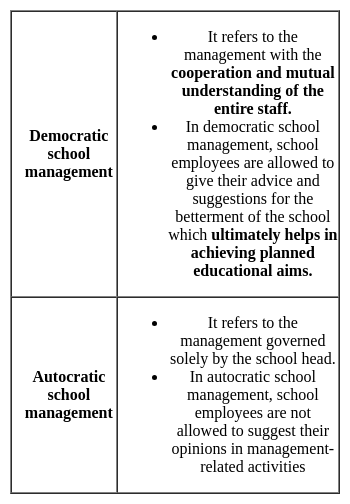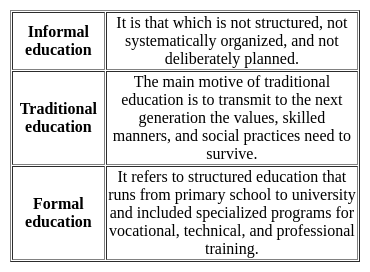Software Development Exam > Software Development Tests > Test: Education & Leadership (Aims of Education) - Software Development MCQ
Test: Education & Leadership (Aims of Education) - Software Development MCQ
Test Description
20 Questions MCQ Test - Test: Education & Leadership (Aims of Education)
Test: Education & Leadership (Aims of Education) for Software Development 2025 is part of Software Development preparation. The Test: Education & Leadership (Aims of Education) questions and answers have been prepared
according to the Software Development exam syllabus.The Test: Education & Leadership (Aims of Education) MCQs are made for Software Development 2025 Exam.
Find important definitions, questions, notes, meanings, examples, exercises, MCQs and online tests for Test: Education & Leadership (Aims of Education) below.
Solutions of Test: Education & Leadership (Aims of Education) questions in English are available as part of our course for Software Development & Test: Education & Leadership (Aims of Education) solutions in
Hindi for Software Development course.
Download more important topics, notes, lectures and mock test series for Software Development Exam by signing up for free. Attempt Test: Education & Leadership (Aims of Education) | 20 questions in 20 minutes | Mock test for Software Development preparation | Free important questions MCQ to study for Software Development Exam | Download free PDF with solutions
Detailed Solution for Test: Education & Leadership (Aims of Education) - Question 1
Test: Education & Leadership (Aims of Education) - Question 2
School culture plays a crucial in achieving the aims of education. Here, school culture refers to the:
Detailed Solution for Test: Education & Leadership (Aims of Education) - Question 2
Test: Education & Leadership (Aims of Education) - Question 3
If a learner 'fails' to achieve a certain goal in the classroom, then it shows
Detailed Solution for Test: Education & Leadership (Aims of Education) - Question 3
Test: Education & Leadership (Aims of Education) - Question 4
Which of the following statement is the aim of education for international understanding in school?
Detailed Solution for Test: Education & Leadership (Aims of Education) - Question 4
Test: Education & Leadership (Aims of Education) - Question 5
In which way, Democratic School Management helps in achieving planned educational aims?
Detailed Solution for Test: Education & Leadership (Aims of Education) - Question 5
Test: Education & Leadership (Aims of Education) - Question 6
Kritika who does not talk much at home talks a lot at school. It shows that _____________.
Detailed Solution for Test: Education & Leadership (Aims of Education) - Question 6
Test: Education & Leadership (Aims of Education) - Question 7
The most appropriate reason for absence and escape from school which hinders the achievement of educational aims include:
Detailed Solution for Test: Education & Leadership (Aims of Education) - Question 7
Test: Education & Leadership (Aims of Education) - Question 8
"Success" in schools should be broadened beyond specific academic achievement within the school to include:
Detailed Solution for Test: Education & Leadership (Aims of Education) - Question 8
Test: Education & Leadership (Aims of Education) - Question 9
What kind of support should a school provide to achieve educational aims by addressing the Individual differences in students?
Detailed Solution for Test: Education & Leadership (Aims of Education) - Question 9
Test: Education & Leadership (Aims of Education) - Question 10
A school will become a true second home for the child if _______________.
Detailed Solution for Test: Education & Leadership (Aims of Education) - Question 10
Test: Education & Leadership (Aims of Education) - Question 11
Educational and instructional objectives provide direction to:
Detailed Solution for Test: Education & Leadership (Aims of Education) - Question 11
Test: Education & Leadership (Aims of Education) - Question 12
Education is its own end. Its aims:
Detailed Solution for Test: Education & Leadership (Aims of Education) - Question 12
Test: Education & Leadership (Aims of Education) - Question 13
True education works towards ________.
Detailed Solution for Test: Education & Leadership (Aims of Education) - Question 13
Test: Education & Leadership (Aims of Education) - Question 14
Which is not included in an affective domain?
Detailed Solution for Test: Education & Leadership (Aims of Education) - Question 14
Test: Education & Leadership (Aims of Education) - Question 15
Which of the following is not a scope of access?
Detailed Solution for Test: Education & Leadership (Aims of Education) - Question 15
Test: Education & Leadership (Aims of Education) - Question 16
The student behaves aggressively in the classroom, he needs help in:
Detailed Solution for Test: Education & Leadership (Aims of Education) - Question 16
Test: Education & Leadership (Aims of Education) - Question 17
Which domain is also called as conative domain of learning?
Detailed Solution for Test: Education & Leadership (Aims of Education) - Question 17
Test: Education & Leadership (Aims of Education) - Question 18
Correspondence learning”, “distance learning” and “open systems”, are a part of:
Detailed Solution for Test: Education & Leadership (Aims of Education) - Question 18
Test: Education & Leadership (Aims of Education) - Question 19
Which one of the following is not a step in the learning process of education?
Detailed Solution for Test: Education & Leadership (Aims of Education) - Question 19
Test: Education & Leadership (Aims of Education) - Question 20
Given are the function of educational objectives except-
Detailed Solution for Test: Education & Leadership (Aims of Education) - Question 20
Information about Test: Education & Leadership (Aims of Education) Page
In this test you can find the Exam questions for Test: Education & Leadership (Aims of Education) solved & explained in the simplest way possible.
Besides giving Questions and answers for Test: Education & Leadership (Aims of Education), EduRev gives you an ample number of Online tests for practice
Download as PDF




















